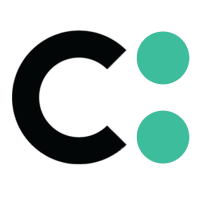The Tragedy of Late Detection, and the Solution
Lung cancer remains the number one cause of cancer death in Australia. Although the NLST and NELSON studies proved that
Low-Dose CT (LDCT) screening can reduce lung cancer mortality by up to 26%, the reality is that many patients are diagnosed only after symptoms appear. In response, the Australian government has initiated the establishment of a national early detection screening system based on LDCT. A recent webinar co-hosted by Coreline Soft and LungScreen Australia revealed the specific process of how AI technology supports Quality and Equity, the core tenets of this national model.
Why 'Screening' and Not Just 'Diagnosis'?
This session emphasized the fundamental difference between Screening and Diagnosis.
Diagnosis vs. Screening: A Different Purpose from the Start

The key takeaway is that screening is not a single report but a 'continuous management process' that improves quality through data accumulation and constant feedback.
The Core Strategy: What a 'Centralized Model' Makes Possible
LungScreen Australia and Coreline Soft designed a dedicated screening workflow structure, building a model where operations—from image collection to reporting, patient recall, and quality management—run on a single central system.
 The Role of AI: AVIEW LCS
The Role of AI: AVIEW LCS Coreline's AI solution, AVIEW LCS, supports nodule detection and classification, contributing to higher radiologist reading efficiency and maintaining consistent quality standards.
System Components This model is comprised of the following key elements:
- Separation of Image Acquisition and Reporting: Local clinics scan, central hub reports
- Patient Registry and Vendor Neutral Archive (VNA): Longitudinal data management
- National Guideline-Based Structured Report Templates: Consistent reporting system
- Automated Recall and Follow-up System: Prevents patient drop-off
- Continuous Quality Monitoring including Feedback and QA: Real-time improvement
The Achievement: 330+ Clinics Nationwide United by a Single Standard
Key Metrics
- Participating Institutions: 50+ radiology practices, 330+ clinics
- Cumulative Scans: 6,000+ (since program launch)
- Coverage: Nationwide, from urban centers to remote regions
Why is this Innovative? Australia's landmass is 35 times that of the Korean Peninsula, and 30% of its population resides in rural and remote areas. Unifying 330+ clinics under a single quality standard despite these geographical conditions is a highly innovative achievement.
Currently, over 50+ radiology practices and 330+ clinics participate in this program. All institutions, without needing a separate system, transmit images to the central reporting hub and generate reports using a standardized template. This structure lowers the barrier to entry and realizes an equitable access system where the same quality of screening is available anywhere in the country, including rural and urban areas.
Preventing Patient Drop-off: Automated Reporting and Recall Management
LungScreen maintains a consistent reporting system using structured report templates that reflect national lung cancer screening guidelines.
How the Automated Recall System Works Specifically, a recall system is built in to automatically send notifications for follow-up scan schedules based on nodule classification, managing patients and their GPs so they do not miss follow-up appointments. This process leads to the following benefits:
- Increased participation rates
- Reduced drop-off rates
- Enhanced patient safety
- Enabled timely therapeutic intervention
Data-Driven Quality Management: What 6,000+ Scans Tell Us
All reporting is continuously evaluated for quality through Peer Review, KPI benchmarking, and QA loops. Since the program's launch, over 6,000+ cases have been reported through the central system, and this data is used for analyzing the following quality metrics:
Key Monitoring Items
- Radiation Dose Variation Monitoring: Standardization and safety assurance across institutions
- Incidental Findings: Tracking and management
- Recall Success Rate and Patient Adherence: Program efficiency evaluation
This data is accumulated as evidence for future research and policy development, supporting the continuous advancement of Australia's national lung cancer screening program.
Realizing 'Early Detection' and 'Healthcare Equity'
The Australian model presented in this webinar concretely shows the future direction for national lung cancer screening, centered on its core principles: Early Detection and Equity. The collaboration between LungScreen Australia and Coreline Soft is making the
"National-Scale, Quality-Assured Lung Cancer Screening Model" a reality by combining AI with a centralized reporting system.

Next Steps
To Hospital and Medical Institution Stakeholders How can AI innovate your institution's lung cancer screening system? Discover how Coreline's AVIEW LCS supports Australia's national screening system.
[Request a Demo]
To Medical Professionals Interested in Lung Cancer Screening From the NLST/NELSON studies to the latest AI-based screening models, find everything about early lung cancer detection in the resources below.
Related Resources
Webinar & Product Information
Partners & Related Research
Australian Cancer Statistics (Official Sources)


 List
List



